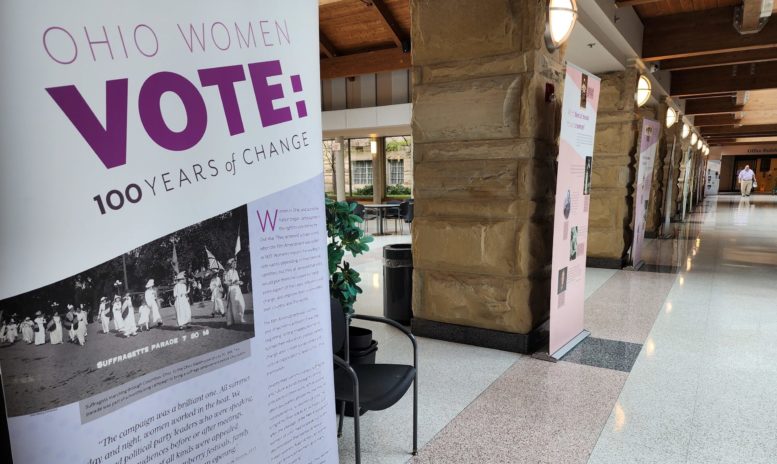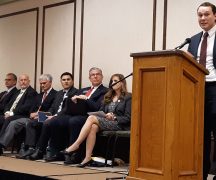By JAN LARSON McLAUGHLIN
BG Independent News
Ohio legislators were among those who refused women the right to vote until forced to by a Constitutional Amendment.
That hard fought for right is the focus of a traveling exhibit set up in the Wood County Courthouse atrium.
Prior to 1776, women had voting rights in several of the colonies that would become the United States. But by 1807, every state constitution denied women even limited suffrage.
Women who believed their gender had a right to vote held the first convention for women’s rights in the U.S. in Seneca Falls, New York, in 1848. But it wouldn’t be until 1920 that many women gained the right to vote.
Some states – primarily in the west – granted women the right to vote decades prior to the 19th Amendment. The first was Wyoming in 1869, followed by Utah in 1870, Colorado in 1893, Idaho in 1896, and then Washington, California, Oregon, Arizona, Montana, North Dakota, New York, Rhode Island, Louisiana, Oklahoma and Michigan in the early 1900s.
But Ohio resisted until the 19th Amendment was adopted in 1920.
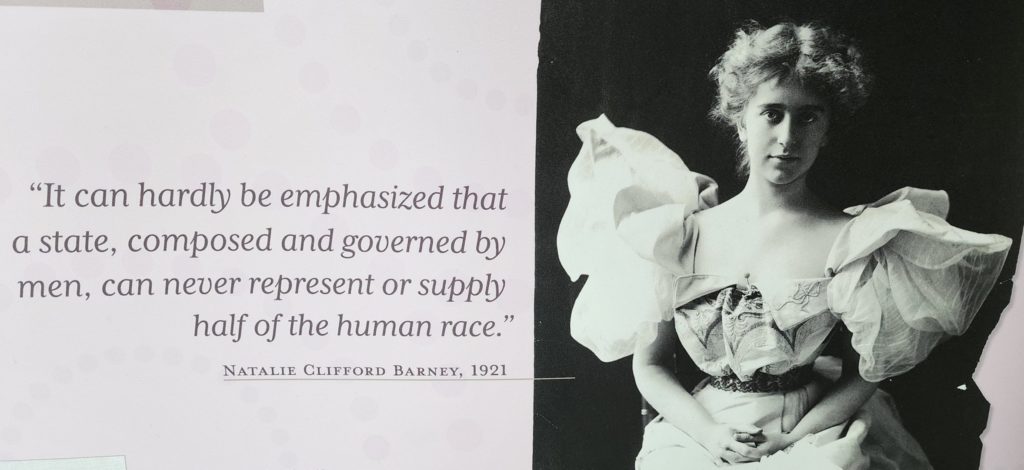
“We were not early adopters,” said Judy Kehrle, a member of the Toledo-Lucas County League of Women Voters, who arranged for the exhibit to come to the Wood County Courthouse.
The 12 tall panels on display in the courthouse atrium in Bowling Green tell the story of bold women fighting for the right to vote – and of accomplishments by Ohio women since they gained that right 102 years ago.
The traveling exhibit was originally planned to be set up around Ohio during the 100th anniversary of women’s suffrage in 2020. However, COVID interrupted those plans, Kehrle said.
And perhaps the timing now is just right – with the exhibit being displayed at a moment when voting rights and women’s rights are being targeted by legislatures.
“I think it’s important for women to exercise that right to vote – we worked hard for it,” Kehrle said. “It is an extremely important time for women and women’s rights.”
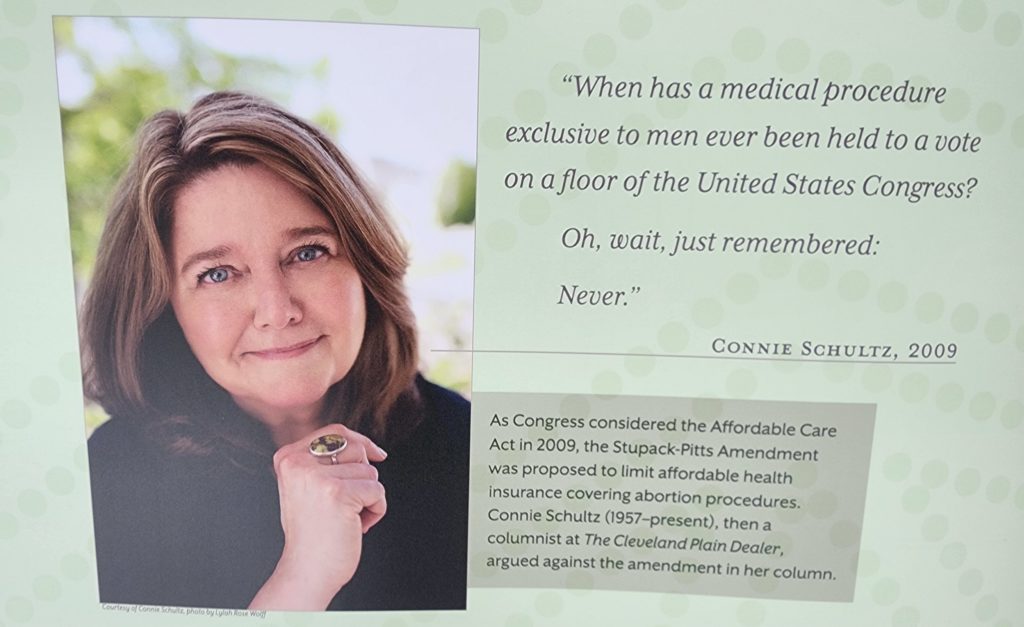
The display also points out the progress made by women once they were granted the right to vote.
“They took the power and did something with it,” Kehrle said.
In preparation for the newly-earned voting rights, the League of Women Voters organization was created six months prior to the 19th Amendment passing.
The league wanted women to use their own minds. So the organization became a non-partisan group focused on education, Bowling Green League of Women Voters member Lee McLaird said as the century anniversary neared in 2019.
“They didn’t want them to vote just as their husbands did,” Bowling Green League of Women Voters member Lee Hakel said in 2019.
The league continues its education efforts today, studying issues such as health care, education, birth control, gerrymandering and the census.

“Ohio is one of the founding places for the League of Women Voters,” McLaird said. “It was a hotbed of political activism.”
In Bowling Green, the first suffragists meeting was reportedly held in the rose-colored home currently owned by George and Susan Winters on West Wooster Street.
“It was a long and difficult passage to get there,” Hakel said. “It took almost 100 years to get the vote. You really have to appreciate we all have a right to vote.”
The traveling exhibit is expected to remain in the Wood County Courthouse Atrium at least through mid-June. Kehrle has hopes that people pause to read the panels as they pass by.
“It really sparks conversation,” she said. “It reminds women of the struggle. It celebrates the achievement of voting and the contributions of women.”
“We’re sometimes shuffled to the back of the room,” Kehrle said, but the panels point out women who have made significant contributions in politics, sports, science and the arts.
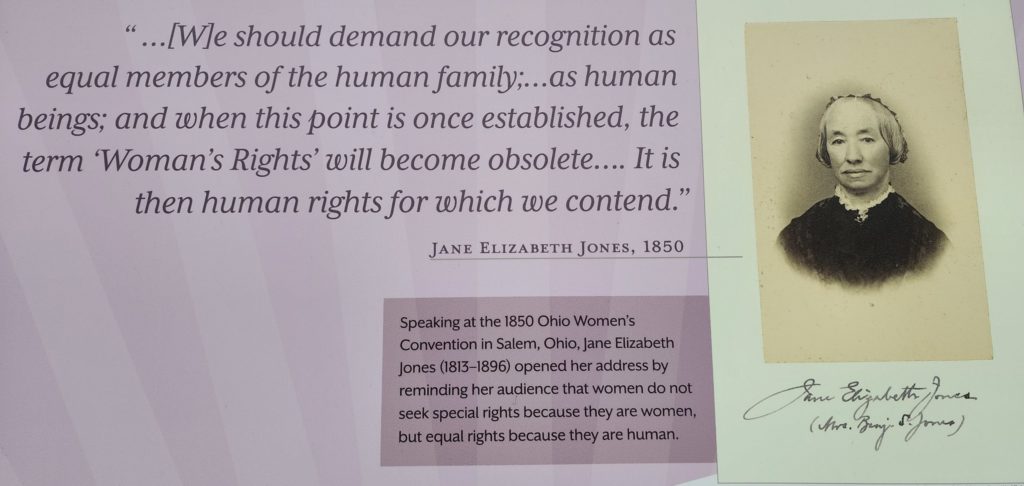
Kehrle’s personal heroes of the suffrage movement include Amelia Jenks Bloomer who was an early suffragist, editor, and social activist. In 1848, Bloomer went to the Seneca Falls Women’s Rights Convention. The next year she created The Lily, a newspaper solely dedicated to women.
Bloomer was also influential in dress reform. After noticing the health hazards and restrictive nature of corsets and dresses, Bloomer created pantaloons, also called bloomers, which came to represent activists in the women’s rights movement.
Kehrle also has great admiration for Victoria Claflin Woodhull, an American leader of the women’s suffrage movement who ran for president of the United States in the 1872 election. Together with her sister, she was the first woman to operate a brokerage firm on Wall Street.
The suffragist movement stalled during the Civil War. But women picked up the cause again, and became the first group to hold a protest in front of the White House. Many suffragists were jailed, and reportedly abused while behind bars.
Pro-suffrage organizations used a variety of tactics including legal arguments that relied on existing amendments. After those arguments were struck down by the U.S. Supreme Court, suffrage organizations, with activists like Susan B. Anthony and Elizabeth Cady Stanton, called for a new constitutional amendment guaranteeing women the same right to vote possessed by men.
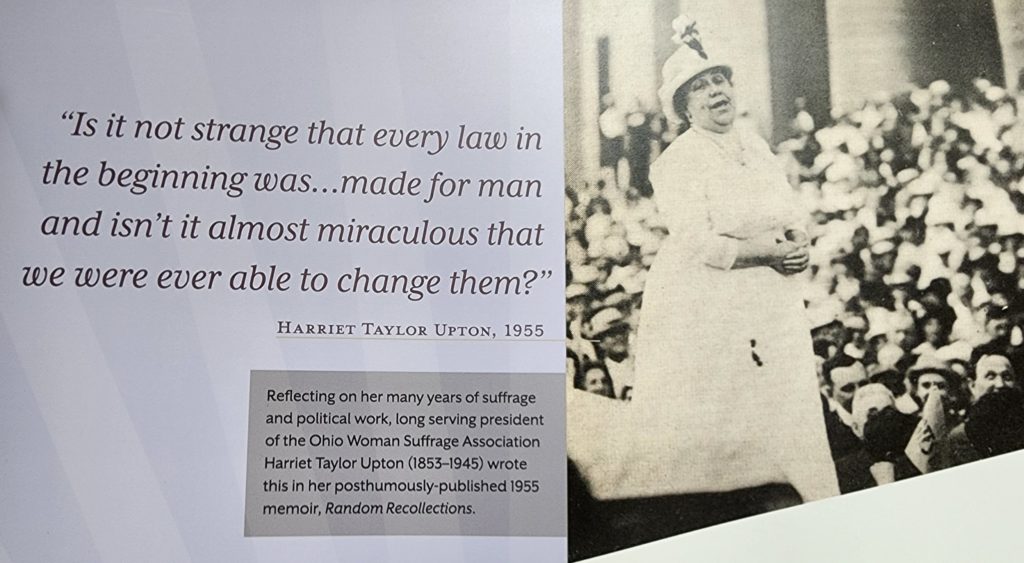
A suffrage proposal that would eventually become the 19th Amendment was introduced to Congress in 1878, but was rejected in 1887. In the 1890s, suffrage organizations focused on a national amendment while still working at state and local levels.
The National Woman’s Party staged marches, demonstrations, and hunger strikes while pointing out the contradictions of fighting abroad for democracy while limiting it at home by denying women the right to vote. The work of both organizations swayed public opinion, prompting President Woodrow Wilson to announce his support of the suffrage amendment in 1918. It passed in 1919 and was adopted in 1920.
The 19th Amendment was not the end of women’s activism – it was the beginning, the exhibit reminds. Voting enabled women to further their education, pursue careers, change laws, create social service and cultural organizations, and run for office themselves.
After adoption of the amendment, women still faced political limitations. They had to lobby their state legislators, bring lawsuits, and engage in letter-writing campaigns to earn the right to sit on juries. In Colorado, it took 33 years for women to secure that right. The Equal Rights Amendment, which would grant women equal rights under the law, has yet to be passed.
And the voting rights effort left out huge sections of the female population. The amendment did not give Black women, Latinas, Native American women, and Asian American women the right to vote because it did not include race as a protected classification.
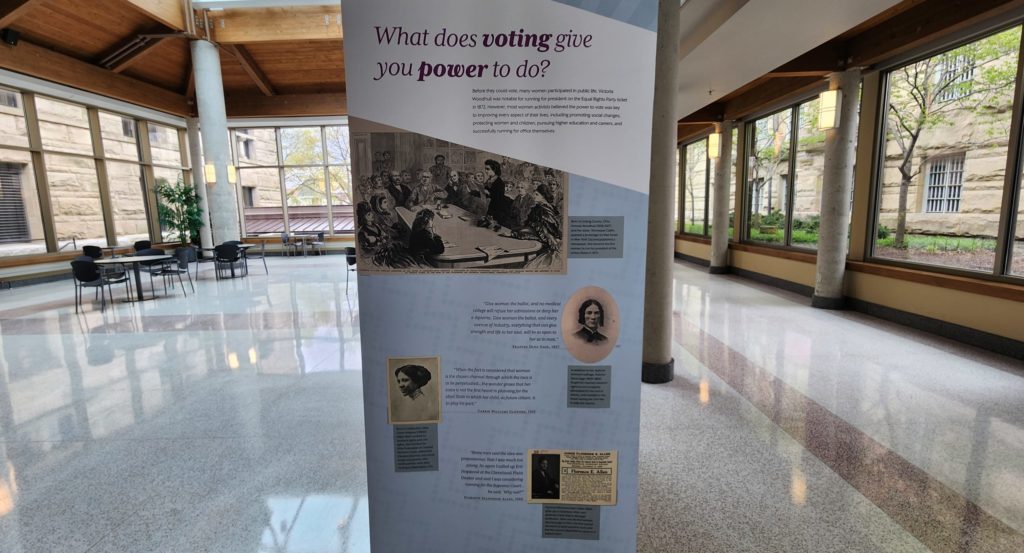
The exhibit makes it clear that Ohio women were a formidable force for change. And they’re not done yet. These women who fought for abolition, suffrage, civil rights, and anti-discrimination laws for housing and employment paved the way for new waves of activism for the LGBTQ+ rights, Black Lives Matter, and Indigenous People’s rights movements happening today.
Here’s the link to a traveling exhibit about women voters of Ohio: https://www.ohiohistory.org/ohio-women-vote-100-years-of-change/

